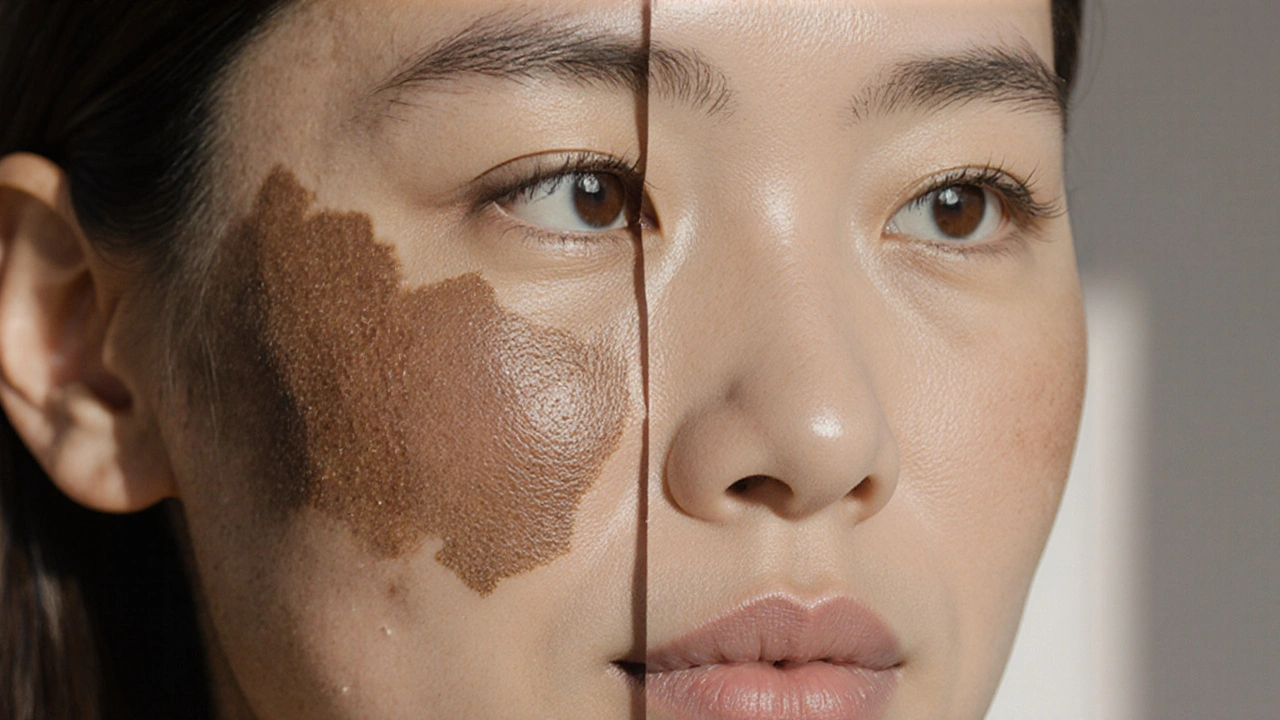Melasma: Causes, Triggers, and What You Can Do About It
When you see dark, patchy spots on your face—especially on your cheeks, forehead, or upper lip—you’re likely dealing with melasma, a common skin condition that causes brown or gray-brown patches due to excess melanin production. Also known as chloasma, it’s not dangerous, but it can be frustratingly persistent and hard to hide. Unlike regular sunspots, melasma doesn’t fade with time. It often comes back even after treatment, especially if you don’t protect your skin from the sun.
Melasma isn’t just about sun exposure, though that’s a big trigger. It’s deeply tied to hormonal changes, fluctuations in estrogen and progesterone that stimulate melanocytes. That’s why it’s so common during pregnancy—many call it the "mask of pregnancy." But it also shows up in women taking birth control pills, hormone replacement therapy, or even those with thyroid issues. It’s not just a women’s issue, though men can get it too, especially with high sun exposure or certain medications.
The connection between skin inflammation, low-grade irritation that can worsen pigment production and melasma is often overlooked. If you have sensitive skin, eczema, or even use harsh skincare products, you might be unknowingly fueling the dark patches. UV light doesn’t just darken the spots—it keeps the cycle going by activating melanin-producing cells deep in the skin. That’s why sunscreen isn’t optional—it’s the foundation of any real treatment plan.
You’ll find posts here that dig into how hormones like prolactin and estrogen interact with skin cells, how certain medications can trigger or calm pigmentation, and what really works when it comes to fading stubborn dark spots. Some of the articles cover how drugs like cabergoline affect hormone balance, which can indirectly influence melasma. Others look at inflammation’s role in skin conditions like acne and eczema—similar pathways that can make melasma worse. You won’t find miracle cures here, but you will find clear, science-backed info on what actually helps, what doesn’t, and how to stop the cycle.
There’s no one-size-fits-all fix for melasma. But understanding what’s driving it—your hormones, your sun habits, your skincare routine—gives you real power. The posts below give you practical ways to take control, whether you’re dealing with post-pregnancy patches, medication-related darkening, or just tired of looking in the mirror and seeing spots that won’t go away.

Melasma vs Hyperpigmentation: Key Differences Explained
Learn the key differences between melasma and hyperpigmentation, their causes, symptoms, and effective treatment options for clearer skin.